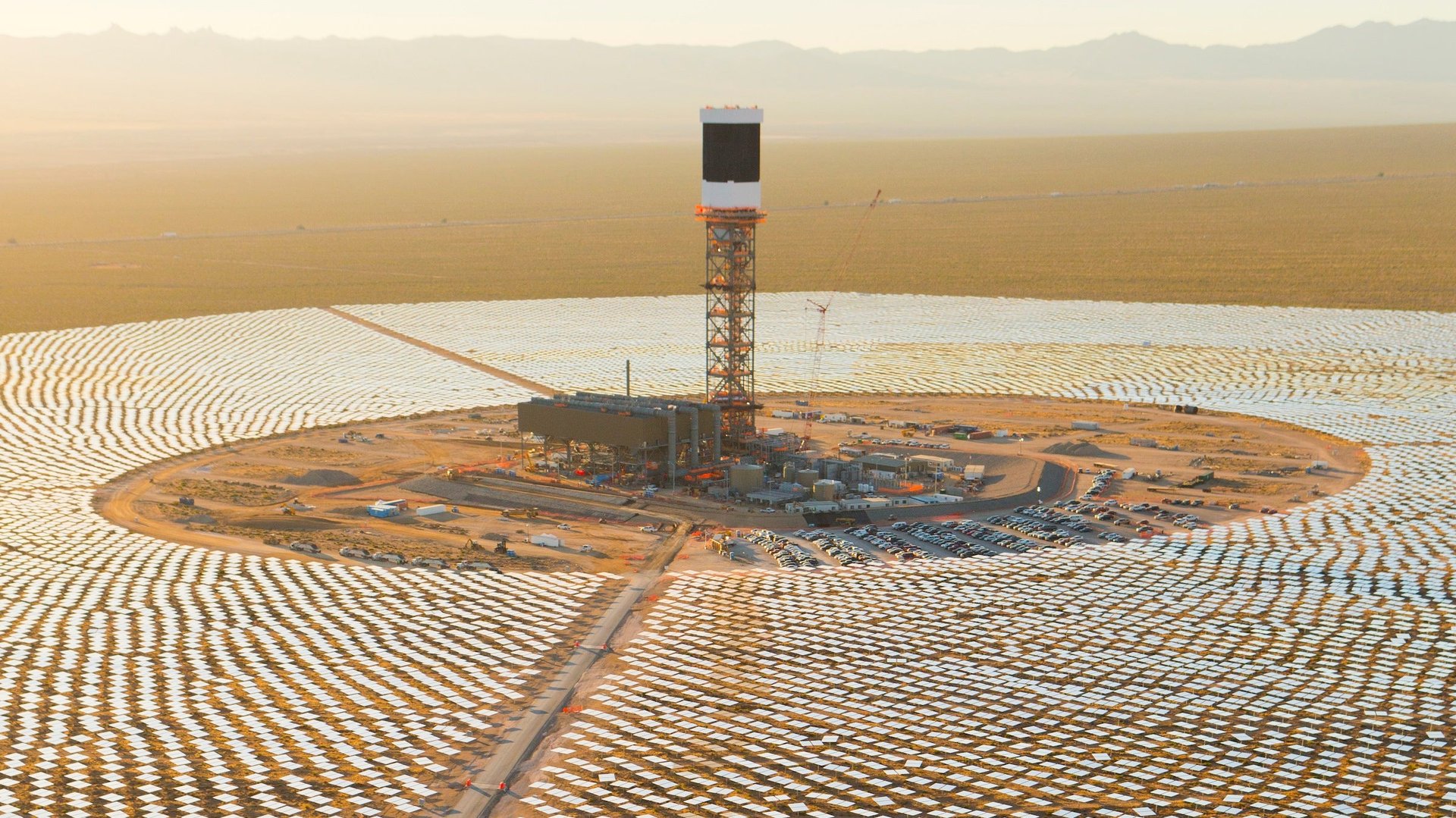California’s dream to be the Saudi Arabia of solar dries up in the desert
This item has been corrected.


This item has been corrected.
Three years ago California regulators in quick succession approved nine multibillion-dollar solar thermal power plants. They were to be built in the desert and would generate 4,142 megawatts (MW) of carbon-free electricity. The state, it was said, was on its way to becoming the Saudi Arabia of solar.
Not any more. Today, the developers of four of those projects have since gone bankrupt and only three solar thermal power plants are under currently under construction.
In recent weeks, BrightSource Energy put on hold two new solar thermal power plants that would have generated an additional 1,000 MW. (Its 370 MW Ivanpah project, however, is set to go online this year.) And last week, the builder of what would be the world’s largest solar station at 1,000 MW—at peak output that’s equivalent to a big nuclear power plant—downsized the project to 485 MW.
So why are big solar thermal projects in the desert fizzling, while installations of rooftop photovoltaic panels in cities and suburbs continue to set records? It’s all about money, technology and location, location, location.
Unlike photovoltaic panels, which directly convert sunlight into electricity when photons strike silicon cells, solar thermal power plants deploy mirrors called heliostats, which focus the sun on a liquid-filled boiler to generate steam. The steam in turn drives an electricity-generating turbine, like those found in conventional power plants.
Solar thermal plants are more efficient than solar panels at generating electricity and are less prone to having a passing cloud interrupt power production. The heat they generate can also be stored in molten salt and released at night to keep the turbine going.
But those advantages have not been able to compete against a 75% drop in solar panel prices in recent years. And while solar thermal power plants involve complex engineering challenges—building huge towers to hold boilers, installing tens of thousands of heliostats—developers of photovoltaic plants simply take rooftop solar panels and put them on the ground, albeit in the tens of thousands.
For risk-averse bankers, tried-and-true solar panels seemed a better bet than solar thermal. Even with a $2.1 billion loan guarantee from the US government, Germany’s Solar Millennium could not find bankers willing to put up the billions needed to build its 1,500 MW of solar thermal projects in California. It eventually filed for bankruptcy.
Tessera Solar met the same fate after bankers balked at financing $4.6 billion to install 54,900 solar dishes—each 40 feet (12 meters) high—on 10,000 acres (4,000 hectares) of government-owned desert land.
Utility regulators also have begun to resist approving the high-priced power-purchase agreements for solar thermal projects. No surprise, then, that the developers of four of the solar thermal projects approved in 2010 have since switched to photovoltaic technology for their power plants.
And while the intense sunshine of California’s Mojave Desert makes it an ideal place to generate solar electricity, environmentalists are lobbying against both solar thermal and photovoltaic projects because of their impact protected wildlife like the desert tortoise.
So where is the next Saudi Arabia of solar? Try Saudi Arabia itself. The Middle East kingdom is seeking $100 billion to build solar power plants in the desert with the goal of obtaining a third of its electricity from renewable sources.
Correction: An earlier version of this article said that building a solar thermal plant involves installing tens of heliostats, instead of tens of thousands.